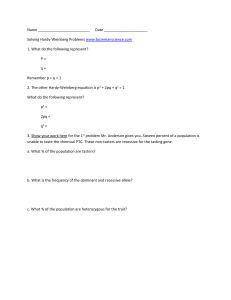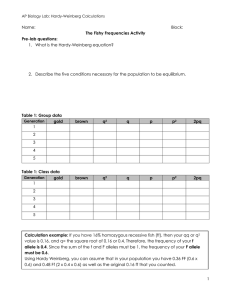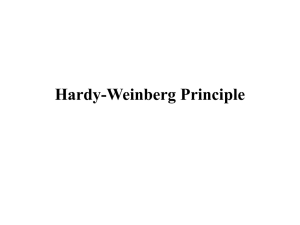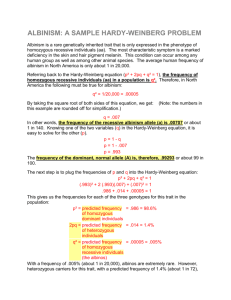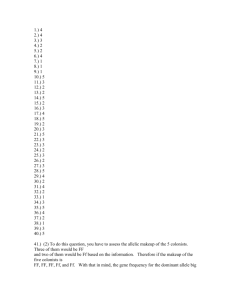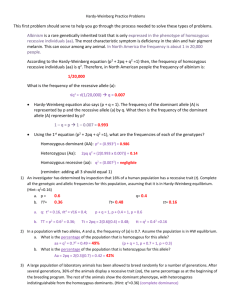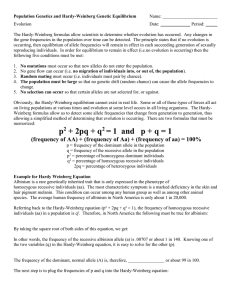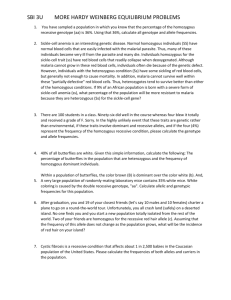Hardy-Weinberg Practice Problems
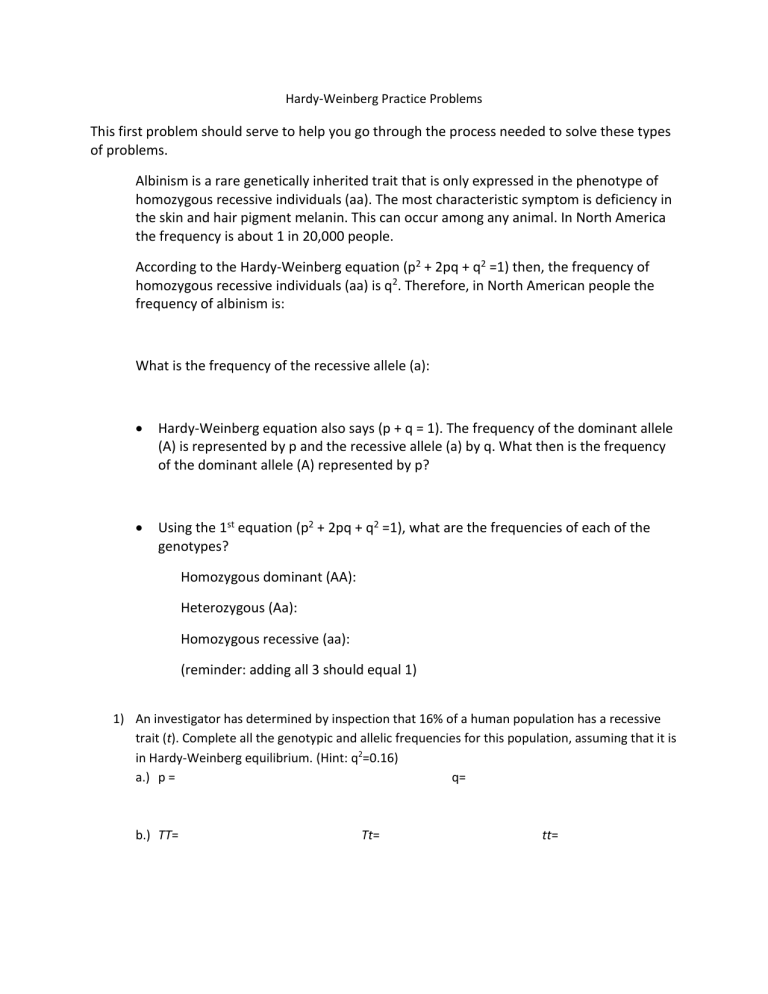
Hardy-Weinberg Practice Problems
This first problem should serve to help you go through the process needed to solve these types of problems.
Albinism is a rare genetically inherited trait that is only expressed in the phenotype of homozygous recessive individuals (aa). The most characteristic symptom is deficiency in the skin and hair pigment melanin. This can occur among any animal. In North America the frequency is about 1 in 20,000 people.
According to the Hardy-Weinberg equation (p 2 + 2pq + q 2 =1) then, the frequency of homozygous recessive individuals (aa) is q 2 . Therefore, in North American people the frequency of albinism is:
What is the frequency of the recessive allele (a):
Hardy-Weinberg equation also says (p + q = 1). The frequency of the dominant allele
(A) is represented by p and the recessive allele (a) by q. What then is the frequency of the dominant allele (A) represented by p?
Using the 1 st equation (p 2 + 2pq + q 2 =1), what are the frequencies of each of the genotypes?
Homozygous dominant (AA):
Heterozygous (Aa):
Homozygous recessive (aa):
(reminder: adding all 3 should equal 1)
1) An investigator has determined by inspection that 16% of a human population has a recessive trait (t). Complete all the genotypic and allelic frequencies for this population, assuming that it is in Hardy-Weinberg equilibrium. (Hint: q 2 =0.16) a.) p = q= b.) TT= Tt= tt=
2) In a population with two alleles, A and a, the frequency of (a) is 0.7. Assume the population is in
HW equilibrium. a.) What is the percentage of the population that is homozygous for this allele?
What is the percentage of the population that is heterozygous for this allele?
3) A large population of laboratory animals has been allowed to breed randomly for a number of generations. After several generations, 36% of the animals display a recessive trait (aa), the same percentage as at the beginning of the breeding program. The rest of the animals show the dominant phenotype, with heterozygotes indistinguishable from the homozygous dominants.
(Hint: q 2 =0.36) a.
What is the estimated frequency of allele a in the gene pool? b.
What proportion of the population is probably heterozygous (Aa) for this trait?
4) In peas, a gene controls flower color such that R = purple and r = white. In an isolated pea patch, there are 36 purple flowers and 64 white flowers. Assuming Hardy-Weinberg equilibrium, what is the value of q for this population?
5) In a population of 10,000 people, 4897 have blood type MM, 4210 have blood type MN, and 893 have blood type NN. What are the allelic frequencies, the genotypic frequencies, and the phenotypic frequencies for this population?

